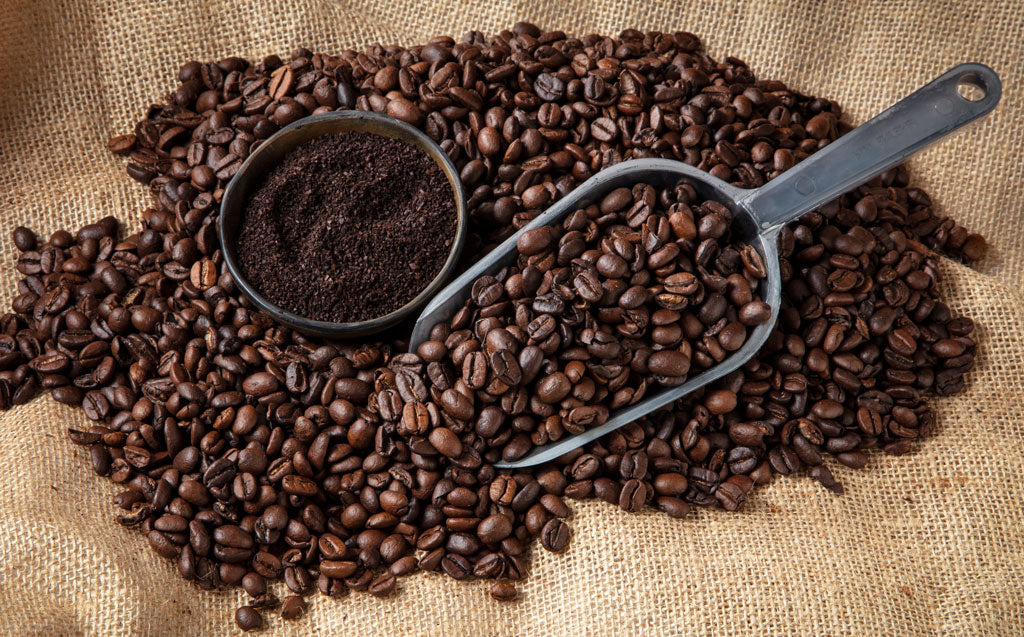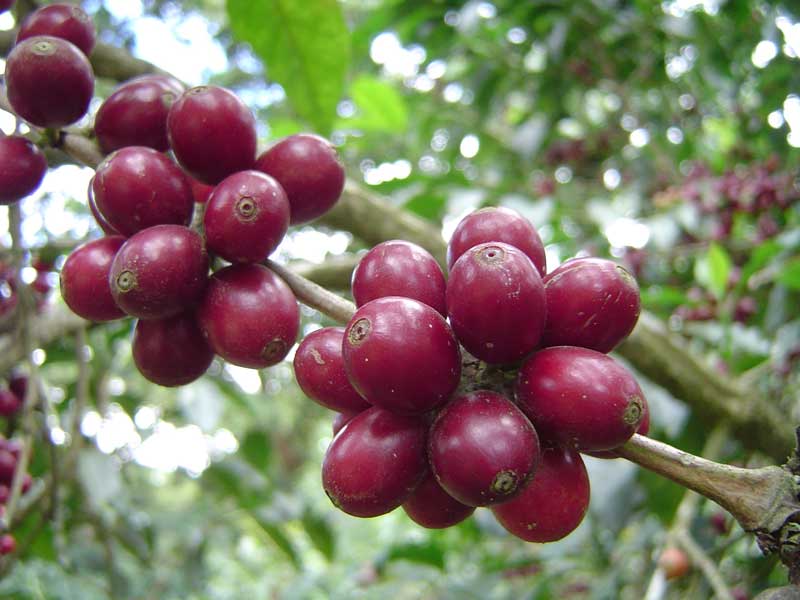Coffee Beans 101: Whatever You Need to Learn About Coffee and Blended Coffee Beans
When it involves coffee, recognizing the nuances of espresso and blended beans can change your everyday cup. You'll discover the unique characteristics of Arabica and Robusta beans, and just how each effects flavor and high levels of caffeine web content. From the expanding procedure to roasting techniques, every action contributes in your coffee experience. What makes the excellent mixture? Let's discover the necessary aspects that contribute to a remarkable mug of coffee.
Comprehending Coffee Beans: Ranges and types
When diving into the world of coffee, comprehending the kinds and selections of coffee beans is necessary for each fanatic. You'll mainly experience 2 primary species: Arabica and Robusta. Arabica beans are recognized for their smooth, intricate tastes and lower high levels of caffeine content, making them a preferred among coffee enthusiasts. On the other hand, Robusta beans load a punch with a stronger, extra bitter preference and greater caffeine levels, usually used in coffee blends.Within these species, you'll find different local varieties, each bringing special characteristics. Ethiopian Yirgacheffe supplies intense flower notes, while Colombian beans provide a well-balanced taste account. As you discover, keep in mind to take note of processing methods like washed or all-natural, as they can significantly influence the final taste. By acquainting on your own with these beans and their flavors, you'll elevate your coffee experience and make more informed options in your brewing journey.
The Expanding Process: From Seed to Bean

When you check out the trip of coffee, all of it beginnings with seed option strategies that establish the structure for top quality. From there, growing and gathering play necessary duties in ensuring the beans thrive. Finally, processing techniques change those harvested cherries into the coffee beans you like.
Seed Option Methods
Picking the appropriate seeds is essential for generating top notch coffee beans, as it lays the foundation for the entire expanding process. You ought to start by picking seeds from reputable sources that focus on top quality and hereditary diversity. Look for selections known to flourish in your particular climate and soil conditions. Focus on the seed's age and storage conditions, as fresh seeds tend to germinate much better. When possible, choose natural seeds to minimize exposure to hazardous chemicals. Take into consideration the condition resistance of various ranges, as this can substantially influence your yield. Lastly, don't be reluctant to seek advice from neighborhood farmers or specialists to gain insights right into the very best seed options for your area. This knowledge will boost your coffee-growing experience.
Cultivation and Harvesting
As you support your coffee seeds right into thriving plants, comprehending the growing and harvesting procedure is important for achieving the most effective flavor and high quality. SOE. Start by planting your seeds in well-draining dirt, preferably in a shaded location to secure them from direct sunlight. As your plants expand, maintain constant dampness, and be conscious of their requirement for nutrients. Prune routinely to promote air flow and healthy growth.When it comes time to harvest, try to find ripe cherries, which commonly transform a vibrant red. Hand-picking is frequently the very best approach to ensure just the ripest cherries are picked. Timing is essential; collecting also late or too early can impact the taste account of your beans. Accept persistence and care, as this is where high quality begins
Handling Techniques Explained
The following essential action is processing them to change those vibrant fruits into the beans you'll brew as soon as you have actually gathered your coffee cherries. There are two main techniques: the completely dry process and the wet procedure. In the dry process, you spread the cherries out in the sunlight to dry, allowing the fruit to ferment and give special flavors to the beans. On the other hand, the wet process entails removing the fruit immediately and fermenting the beans in water, resulting in a cleaner preference. After processing, the beans are hulled, arranged, and normally dried again. Each technique influences the flavor account, so explore both can aid you uncover your preferred brew. Understanding these approaches is crucial to enjoying your coffee experience.
Roasting Strategies: Exactly How Flavor Is Created
When it pertains to roasting coffee beans, understanding roast degrees is essential to disclosing their special flavors. Each toasting method impacts the aroma and boosts the flavor development process, giving you a richer coffee experience. Allow's explore exactly how these elements come with each other to raise your day-to-day brew.
Roast Degrees Discussed
Roast degrees play a crucial function in forming the flavor account of your coffee. You'll delight in intense acidity and fruity notes when you select a light roast. As you relocate to a medium roast, you'll observe a balance of sweetness and intricacy, frequently highlighting delicious chocolate or caramel tastes. Dark roasts, on the various other hand, deliver strong, smoky attributes with much less acidity, making them durable and abundant. Each level results from various roasting times and temperature levels, affecting the beans' chemical structure. By recognizing these levels, you can better choose a coffee that matches your preference choices. Experiment with different roasts to find which one reverberates with you, boosting your overall coffee experience and pleasure.

Influence on Scent
The roast level not only affects the preference of your coffee however likewise significantly affects its fragrance. When you pick a light roast, you'll usually see brilliant, floral notes that can make your coffee smell vivid and fresh. As the beans dim, the aroma changes; a tool roast draws out much more balanced, caramelized aromas, while a dark roast has a tendency to feature vibrant, great smoky undertones. Each toasting method releases various unpredictable compounds, forming exactly how your coffee smells. In addition, the freshness of the beans plays a vital role; fresh roasted coffee launches a lot more aromatic oils, boosting that luring scent. Pay attention to the roast degree-- it's essential to revealing the complete fragrant experience of your brew.
Taste Development Refine
As you check out the taste development process, you'll discover that toasting techniques play a critical role in shaping the preference profile of your coffee. The toasting temperature and time directly affect the acidity, sweet taste, and resentment of the Resources beans. Light roasts retain even more of the bean's original flavors, highlighting fruity and flower notes. Tool roasts balance acidity and body, using a well-rounded flavor. Dark roasts, on the other hand, highlight vibrant, great smoky qualities while reducing the bean's integral top qualities. During roasting, chain reactions, like the Maillard reaction and caramelization, transform the beans and improve their intricacy. Trying out various you could try this out roasting degrees can aid you locate your perfect brew, so don't be reluctant to taste and discover the rich spectrum of flavors!
Espresso vs. Blended Coffee: Key Differences
Espresso and blended coffee each offer distinct experiences that satisfy different tastes and preferences. Espresso is a concentrated coffee brewed forcibly hot water through finely-ground coffee beans, leading to a rich, strong flavor and a velvety layer of crema on the top. It's commonly appreciated as a shot or used as a base for drinks like lattes and cappuccinos.On the other hand, blended coffee combines different beans from different regions, producing a more balanced flavor profile. You'll typically discover blends that highlight body, sweetness, or acidity, making them flexible for different brewing methods. While espresso concentrates on strength, blended coffee may supply a more comprehensive variety of tastes that can alter with each sip.Ultimately, your choice in between coffee and mixed coffee boils down to your individual choice. Whether you long for a quick jolt or a leisurely cup, both options have something delicious to offer.
Brewing Approaches: Opening the Perfect Cup
When it comes to developing coffee, locating the right technique can transform your experience and raise your mug. Each developing method has its one-of-a-kind appeal and can greatly influence your coffee's flavor and scent. Using a French press enables you to appreciate a robust and rich brew, while a pour-over approach provides a clean, brilliant mug with distinct flavors.If you choose coffee, investing in a high quality equipment can help you master the art of drawing shots. For comfort, a single-serve husk system uses rate without giving up taste.Don' t neglect concerning cold brew, which delivers a smooth, less acidic coffee ideal for hot days. Explore various approaches to uncover what reverberates with your palate. Each brewing technique opens a new world of possibilities, so make the effort to discover and locate your excellent mug. Satisfied developing!
Sampling Notes: Identifying Taste Profiles
Just how can you truly appreciate your coffee if you don't know what flavors to look for? Sampling notes are your overview to recognizing the intricate globe of coffee. Pay attention to the initial tastes that strike your palate when you sip. You could look at here detect fruity notes, like berry or citrus, or perhaps a nutty undertone. As you remain to taste, observe exactly how the flavors evolve-- this is recognized as the "finish." Some coffees might leave a chocolatey or caramel aftertaste, while others may have a bright, clean finish.Consider the body of the coffee, as well; is it airy and light or thick and syrupy? Do not fail to remember acidity; a bright level of acidity can include activity, while a reduced acidity could provide a smoother experience. By determining these taste accounts, you'll deepen your link with each cup, making coffee tasting a fascinating journey of exploration.
Tips for Picking and Storing Coffee Beans
Picking and keeping coffee beans correctly can significantly enhance your developing experience. Start by picking premium beans that suit your preference. Look for quality; beans roasted within the last 2 weeks are perfect. Examine the roast date on the product packaging, and purchase from trusted roasters or neighborhood shops.Once you have your beans, keep them in an airtight container to stop exposure to air, light, and dampness. A dark, awesome area works best, so prevent maintaining them in the fridge or freezer, as this can present moisture. Only grind the quantity you need to preserve quality; entire beans retain flavor longer than pre-ground coffee.Lastly, attempt to utilize your beans within two to 4 weeks after opening up for peak taste. Complying with these pointers will ensure your coffee remains enjoyable and delicious, boosting your daily brew to brand-new heights.
Often Asked Inquiries
For How Long Do Coffee Beans Stay Fresh After Toasting?
Coffee beans remain fresh for concerning two weeks after roasting. You should keep them in a closed container, away from light and dampness. After that, their taste and fragrance begin to lessen significantly.
Can I Mix Different Coffee Bean Varieties?
Definitely, you can mix different coffee bean selections! Trying out blends can boost flavors and develop an unique preference account. Simply make sure to stabilize the toughness and attributes of each variety for the very best results.
What Is the Perfect Work Dimension for Coffee?

Just How Does Altitude Affect Coffee Bean Taste?
Altitude influences coffee bean flavor by affecting the growth price and chemical structure. Greater elevations lead to slower growth, which enhances level of acidity and complexity, providing your coffee a unique and lively taste you will not forget.
Exist Decaffeinated Variations of Espresso Beans?
Yes, there are decaffeinated variations of espresso beans. You can take pleasure in a rich espresso taste without the caffeine kick. Simply seek "decaf" blends at your regional coffeehouse or specialty store. Single Origin Espresso. When diving into the world of coffee, recognizing the types and ranges of coffee beans is essential for every lover. When it comes to toasting coffee beans, understanding roast levels is vital to revealing their distinct tastes. Espresso is a concentrated coffee made by compeling hot water with finely-ground coffee beans, resulting in a rich, strong taste and a creamy layer of crema on top. While coffee focuses on intensity, mixed coffee may use a more comprehensive array of flavors that can change with each sip.Ultimately, your option in between espresso and blended coffee boils down to your personal preference. Some coffees might leave a chocolatey or caramel aftertaste, while others may have an intense, tidy finish.Consider the body of the coffee, also; is it airy and light or thick and syrupy?
 Mara Wilson Then & Now!
Mara Wilson Then & Now! Daniel Stern Then & Now!
Daniel Stern Then & Now! Freddie Prinze Jr. Then & Now!
Freddie Prinze Jr. Then & Now! James Van Der Beek Then & Now!
James Van Der Beek Then & Now! Nancy McKeon Then & Now!
Nancy McKeon Then & Now!